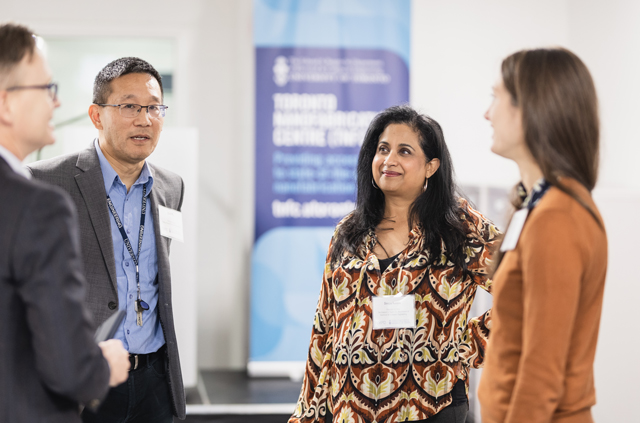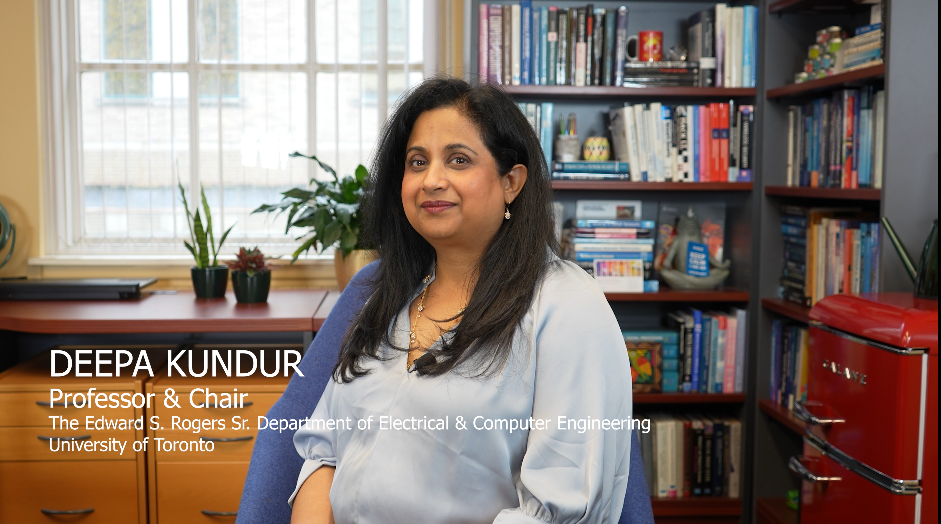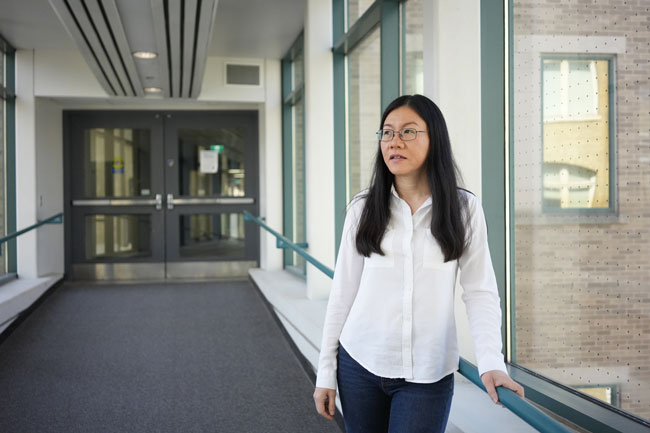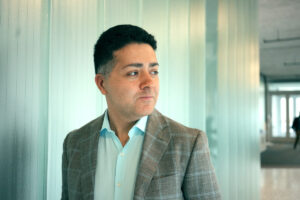
MAY 2, 2024 • By Matthew Tierney
Professor Deepa Kundur, Chair of the University of Toronto’s Edward S. Rogers Sr. Electrical and Computer Engineering, is leading a multidisciplinary research group that will develop quantum-based technology solutions to defend power utilities against future cyberattacks. The group has received a $1.45-million NSERC-Alliance-Mitacs Accelerate grant — the first of its kind in the intersection of quantum, cybersecurity and critical infrastructure.
“We have to stay ahead of the game,” says Kundur. “Technology is always changing the threat landscape. And quantum computing, which is becoming more feasible and practical, is a powerful tool that will make our classical defences obsolete.”
Kundur’s project is a collaboration between academia; Hydro-Québec, a leader in renewable energy; and Xanadu, one of Canada’s most successful quantum computer startups. A second team — headed by Professor Atefeh Mashatan of Toronto Metropolitan University and involving quantum solution leaders Crypto4A and evolutionQ — will build a road map for the classical-to-quantum migration for power grids, in preparation for a future transition.
Quantum enhancement is the next stage in the evolution of today’s smart grids, so-named because they incorporate information-communication technology (ICT) into their operations. ICT has allowed smart grids to adapt to changing conditions and load profiles, as well respond more efficiently to natural disasters, to meet society’s increasing power needs in an intelligent, sustainable way.
“ICT and its advanced sensors generate more data than before,” says Kundur. “We transport this data to different parts of the grid, to start coordinating information to make decisions based on synchronized information and enhanced situational awareness.”
A repercussion of a data-driven smart grid is new vulnerabilities — attackers now target not the physical infrastructure but the information that flows through it.
There are several reasons why. For one, the smart grid’s connectivity increases opportunities for access. Also, ICT adds a level of complexity that results in emergent properties that are difficult to predict and can be difficult to safeguard. The standards and policies put in place to mitigate operational heterogeneity mean there’s a level of interoperability between working grids that hackers can use to their advantage.
Cybersecurity experts have incorporated layers of defences into our smart grids to much success, but those defences are not ready for the quantum advantage.
“Algorithms and cryptography that are incredibly difficult for classical computers to crack become solvable with a quantum computer,” says Kundur. “And then other questions arise. For example, when the power utilities themselves start to use quantum sensors, is this quantum-enhanced information better for attack detection or does it give attackers an ability to hide themselves?”
The question is tough to answer when you consider that quantum sensors of this nature, and the quantum data that it would generate, don’t exist yet.
“We’ll take classical data, use models to predict what quantum versions of the information would appear to be, and then perform anomaly and attack detection on it,” says Kundur. “We’ll be experimenting with quantum machine learning for better pattern recognition to detect a cyberattack. This is a highly exploratory project.”
Even if it’s decades before manufacturers integrate quantum attack-detection algorithms in their devices, Kundur is philosophical about the foundational research that she and her team will carry out in the next few years.
“Security is a process. It’s very much a dynamic interaction,” she says. “And though we can never get to 100% protection, it’s something we have to continually try to achieve.”



